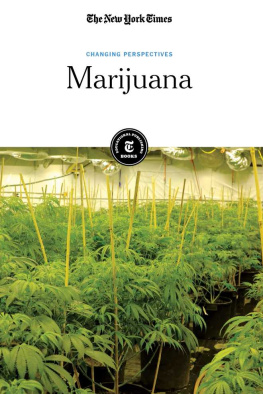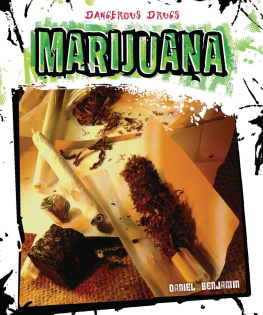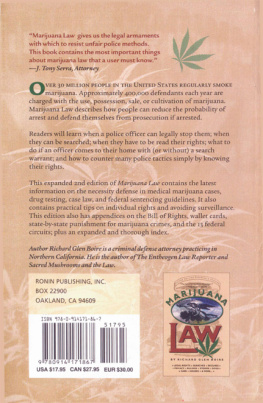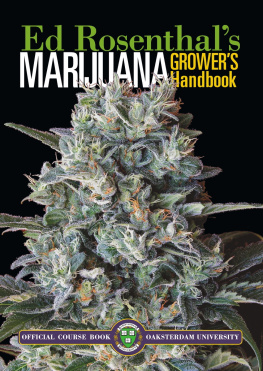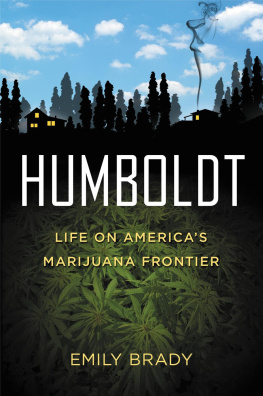SUPER-CHARGED
SUPER-CHARGED
HOW OUTLAWS, HIPPIES, AND SCIENTISTS REINVENTED MARIJUANA
JIM RENDON

This book is presented solely for informational purposes. The manufacture, possession, and distribution of marijuana for any purpose is illegal under federal law of the United States as well as in certain foreign countries. The publisher does not encourage or advocate acting in any way that violates local, federal, or any applicable laws or regulations. This book does not provide medical advice and is not intended to be used as a substitute for consultations with a duly licensed physician regarding diagnosis and/or treatment of disease. Author and publisher disclaim any responsibility to any person or entity for any liability, loss, or damage caused or alleged to be caused directly or indirectly as a result of the use, application, or interpretation of the material in this book.
Copyright 2012 by Jim Rendon. All rights reserved.
Published in 2012 by Timber Press, Inc.
The Haseltine Building
133 S.W. Second Avenue, Suite 450
Portland, Oregon 97204-3527
timberpress.com
2 The Quadrant
135 Salusbury Road
London NW6 6RJ
timberpress.co.uk
Printed in the United States of America
Text designed by Susan Applegate
Library of Congress Cataloging-in-Publication Data
Rendon, Jim.
Super-charged: how outlaws, hippies, and scientists reinvented marijuana/Jim Rendon.1st ed.
p. cm.
How outlaws, hippies, and scientists reinvented marijuana
Includes bibliographical references and index.
ISBN 978-1-60469-295-2
1. MarijuanaHistory. 2. MarijuanaCaliforniaHistory. 3. MarijuanaUnited StatesHistory. 4. MarijuanaTherapeutic useUnited StatesHistory. 5. Cannabis. I. Title. II. Title: How outlaws, hippies, and scientists reinvented marijuana.
HV5822.M3R45 2012
338.4761578270973dc23 2012013890
A catalog record for this book is also available from the British Library.
ACKNOWLEDGMENTS
In states like California that have medical marijuana laws, an increasing openness about cannabis cultivation can make it easy to forget that the federal government still considers the plant to be a dangerous, illegal drug. Those who work with cannabis are always at some risk of arrest no matter how well they adhere to state law. Many, many people took a leap of faith by agreeing to speak with me for this bookpeople who opened their homes and gardens to me, spoke freely, and accepted me at their kitchen tables for more than a few excellent meals. Without their trust and their openness, I would have no book to write, no story to tell. I truly appreciate the trust that all of these sources have placed in me.
In particular Id like to thank Jorge Cervantes. He opened many doors for me in a world where, for obvious reasons, doors do not always open easily. His kindness and interest in this project, his passion for the plant, and knowledge about the industry and those in it made much of this work possible. Mel Frank was a remarkable resource and I appreciate his willingness to field questions and clarify many of the more technical points on the plant and breeding. Kevin Jodrey and the staff at the Humboldt Patient Resource Center in Arcata have also been a fantastic source of information and they have been incredibly tolerant, letting me hang around and pester them with a barrage of questions.
Id also like to thank Tim Ramos and Abner Kingman who read through far too many manuscript pages and offered up great insights that helped me draft the book as well as Emily Loftis for her help. I am indebted to my dear friends in southern Marin County who put me up, fed me, and tolerated my erratic schedule on my layovers on the way to points north. And, without the patience of my wife and two sons who dealt with my long absences while on research trips and my many late evenings writing, none of this would have been possible. Thank you.
INTRODUCTION
The High Times Medical Cannabis Cup in San Francisco is a kind of coming-out bash for medical marijuana, attracting thousands of enthusiastic smokers to a conference center on the edge of the citys South of Market neighborhood. Its one of a few annual gatherings put together by the magazine, which has been publishing articles about marijuana since the 1970s. This one, the second ever in San Francisco, is also a business event with companies selling products and entrepreneurs swapping business cards. Most remarkably, though, it is a broad-daylight, public, pot-smoking bonanza. The emphasis here is on the cannabis. There is only one thing explicitly medical about this event: in order to enter the outdoor area beside the conference building where people are buying, selling, and smoking marijuana you need a recommendation from a physician. Conveniently, one is available on-site for $60.
Outside, in the smoking area, thousands of people are pressed together, moving from one booth to another in a kind of marijuana-infused version of a Middle Eastern bazaar. At booth after booth run by medical marijuana dispensaries, people are selling dozens of different types of walnut-shaped buds that are covered in resin glands containing delta-9-tetrahydrocannabinol, or THC, the compound that gets smokers high. And its not just buds on display and for sale. Cannabis is available in an incredible variety of forms. There are tinctures made from extracts of the plants active ingredients, and dozens of varieties of hashish or hash, a dense paste made up of those powerful resin glands. People are selling seeds and cuttings of the plant. Everywhere there are cannabis-laced foodsbrownies, cupcakes, cookies, candy, chocolate. There is Funny Honey and even Chillo, a hemp-infused beverage complete with a marijuana-leaf logo.
Some of the dispensaries have brought mature marijuana plants with them. One plant, its branches weighed down by resin-coated buds that grow outward in long, thick bunches, bends out into the passing crowd. Every now and then someone will stop to smell the pungent buds. Other dispensaries have set up lounges with DJs playing hip-hop or electronic music. Some of the booths have vaporizers that blow hot air over the buds, heating them only to the temperature at which the resin vaporizes, leaving the plant matter unburned. One vendor has cut to the chase and is just handing out plastic bags filled with marijuana smoke to anyone who wants them. Another person is passing around a joint the size of a baseball bat. Everyone, everywhere, is smoking.
At the far corner of the space is a booth run by Harborside Health Center, the states largest marijuana dispensary. Its founder, Steve DeAngelo, spoke on a panel earlier in the day highlighting some of the successes of the medical marijuana movement: a remarkable 15-year string of victories at the ballot box. Since California voters passed Proposition 215 in 1996, making it legal for people with a physicians recommendation to buy and grow marijuana, 15 other states and Washington, DC, have followed suit, allowing broad legal access to the plant for medical purposes. To many here, DeAngelo is a celebrity. He has been advocating and agitating to make marijuana legal since the 1970s. Hes been a nightclub manager, concert promoter, and record producer. And, just six months after this event, he would star in Weed Wars, a Discovery Channel miniseries about the states marijuana business. In his trademark porkpie hat, his long dark brown braids hanging down on either side of his face, his tie and brightly colored shirt, DeAngelo looks a bit like a ringmaster, a kind of cannabis carnival barker. Watching as thousands of people squeeze past each other moving from booth to booth openly selling, buying, and smoking marijuana herea scene that was once unimaginablehe cant help but smile. This is really amazing, isnt it? he asks.
Next page

